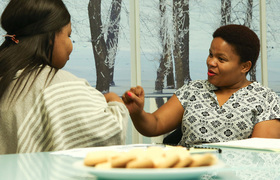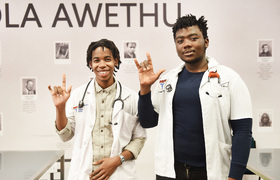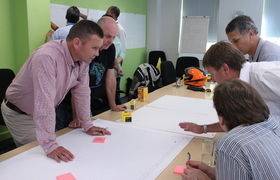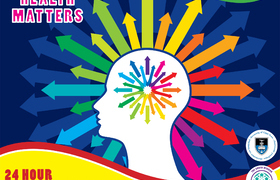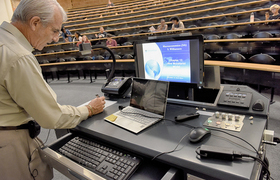Speaking with two hands and all 10 fingers
29 August 2018 | Story Helen Swingler. Photos Je’nine May. Read time 6 min.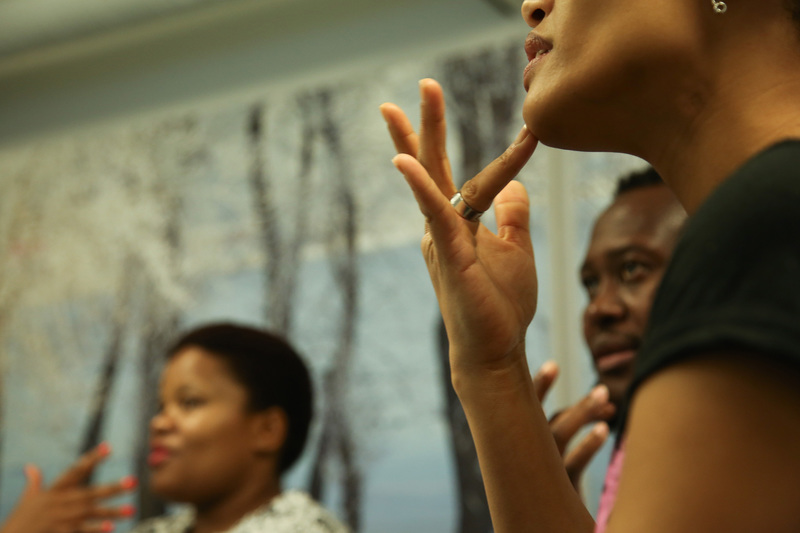
Two hands and 10 fingers are all it takes to learn a new language that’s inclusive and transforming, staff on a pilot course at the Staff Learning Centre have learnt. They recently completed the six-week Signing programme.
A sense of humour and some tenacity also eased the way for the eight staffers who can now hold a basic interactive conversation with a Deaf person in South African Sign Language (SASL).
They’re able to greet people, share their age, name and other basic personal details. They’ve also learnt useful background on Deaf culture, says Lesego Modutle, disability advocacy coordinator, Disability Service, in the Office for Inclusivity & Change. Modutle and her colleague, writing development coordinator Glynnis Newdigate, created the pilot programme.
“I sit in on many of the UCT policy discussions and one of these is language policy. I always nag my colleagues about the inclusion of sign language. But I’ve noticed that Deaf people tend to be isolated; if there’s no interpreter with them, they’re basically cut off. No-one’s communicating with them,” says Modutle.
“We’ve got some wonderful sign language interpreters, but it would be lovely for people not to have to rely on them.”
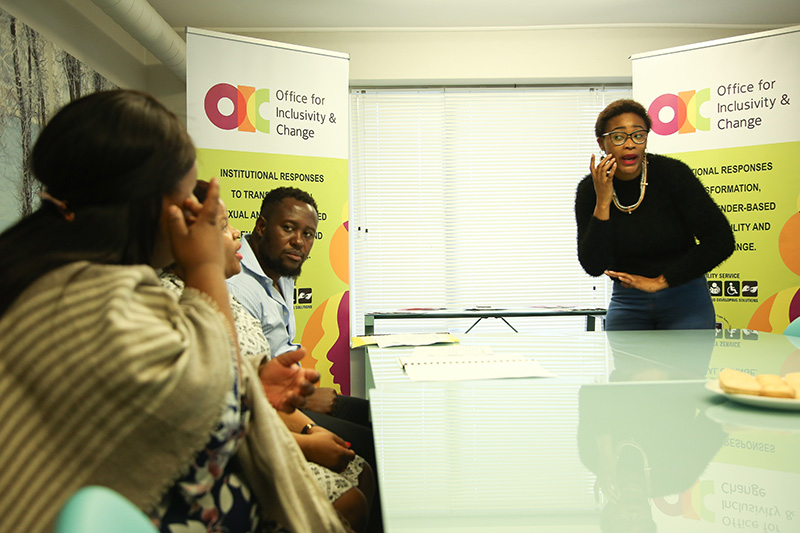
The pilot phase has gone very well, she says, and the students have asked for a second level.
“But it’s baby steps. We’d love to make this broader and for more members of the university to come on board for the introductory course.”
Deaf staffers Roy Priestley and Thumi Manvashe, of the health sciences faculty, were part of the pilot programme, and invaluable teachers and demonstrators.
“Sign language is like any other, a fully-fledged language with its own rules and structure … Once you start visualising it, it becomes easy.”
“Sign language is like any other, a fully-fledged language with its own rules and structure,” says Modutle. “The signs themselves are like pictures. For example, the sign for Cape Town is of Table Mountain. Once you start visualising it, it becomes easy.”
Life-changing
Human resources practitioner Lulama Sibiya was keen to participate in the pilot. Her job is all about interacting with people and she quickly saw how challenging it is for Deaf people to integrate into “normal” community.
“It’s been a life-changing experience.”
Sibiya also has a hearing-impaired cousin whose new wife is Deaf.
“Just the experience of trying to communicate with her, introduce her to the family, dress her in traditional clothes [part of the wedding], was a challenging experience. So, when this came up I thought, yes, I want to do this. When I see them at the end of the year I want to be able to communicate better with them, especially her.”
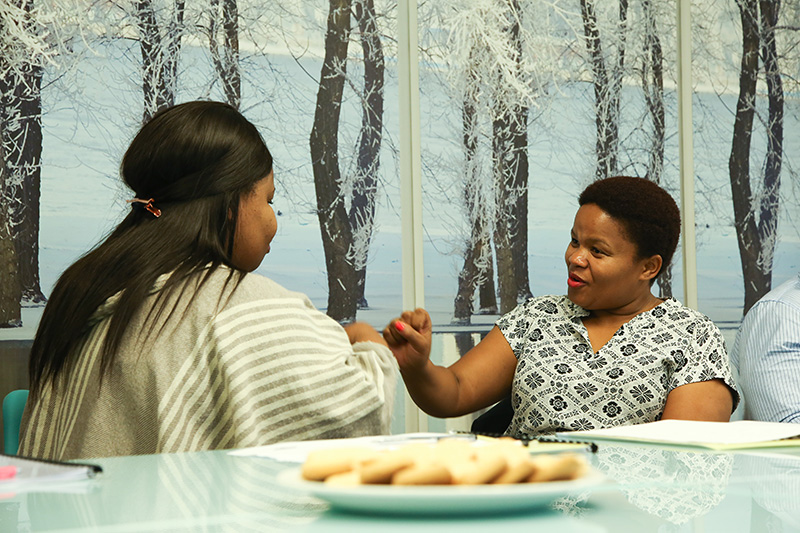
Staff Learning Centre course coordinator Sibongile Dano-Bopape felt inadequate when dealing with Deaf people at the centre. Besides a basic greeting, she couldn’t communicate. The course has changed that. But it wasn’t without challenges.
“I’ve got short hands,” she quipped. “You don’t normally have to work with your hands when you’re interacting. You just talk.” Now she’s learnt to stay silent when she signs, concentrating on what her hands say.
“It’s been an eye-opener. When you meet a Deaf person you kind of shut down. At least this is an opening. They’re not different from us. We just can’t hear what they’re saying. Sign is like any other language we learn.”
Sign language literate
Participant Dr Progress Njomboro, of the Department of Psychology, has a 17-year-old Deaf daughter, Tafadzwa, who attends the De La Bat School for the Deaf in Worcester.
“She was born profoundly Deaf,” he says. “The sign language I learnt helps me to communicate with her. She knows mostly British Sign Language (BSL) so we use that mostly at home. But we want to be able to help her with her school work. That’s why I joined this course. It’s helped me a lot. It’s fast-paced but I enjoyed it.”
Tafadzwa now helps him sign.
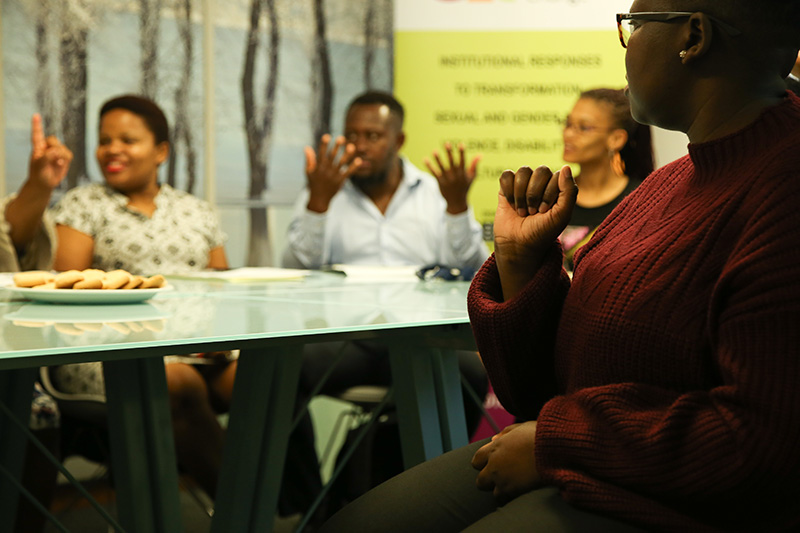
“There are slight differences between BSL and SASL,” he added. “Perhaps because of BSL I found it [SASL] easier to pick up. It hasn’t been such a steep learning curve.”
As Njomboro has found, it helps to have someone to sign with.
“Find a Deaf friend,” Modutle suggests. “The best way to learn a language is from a source speaker. Chat with them every day. Take it slowly. That’s one of the beautiful things about learning: being able to interact.”
- If you are interested in participating in an introductory South African Sign Language course please email Lesego.Modutle@uct.ac.za or call her on 021 650 2427.
 This work is licensed under a Creative Commons Attribution-NoDerivatives 4.0 International License.
This work is licensed under a Creative Commons Attribution-NoDerivatives 4.0 International License.
Please view the republishing articles page for more information.







